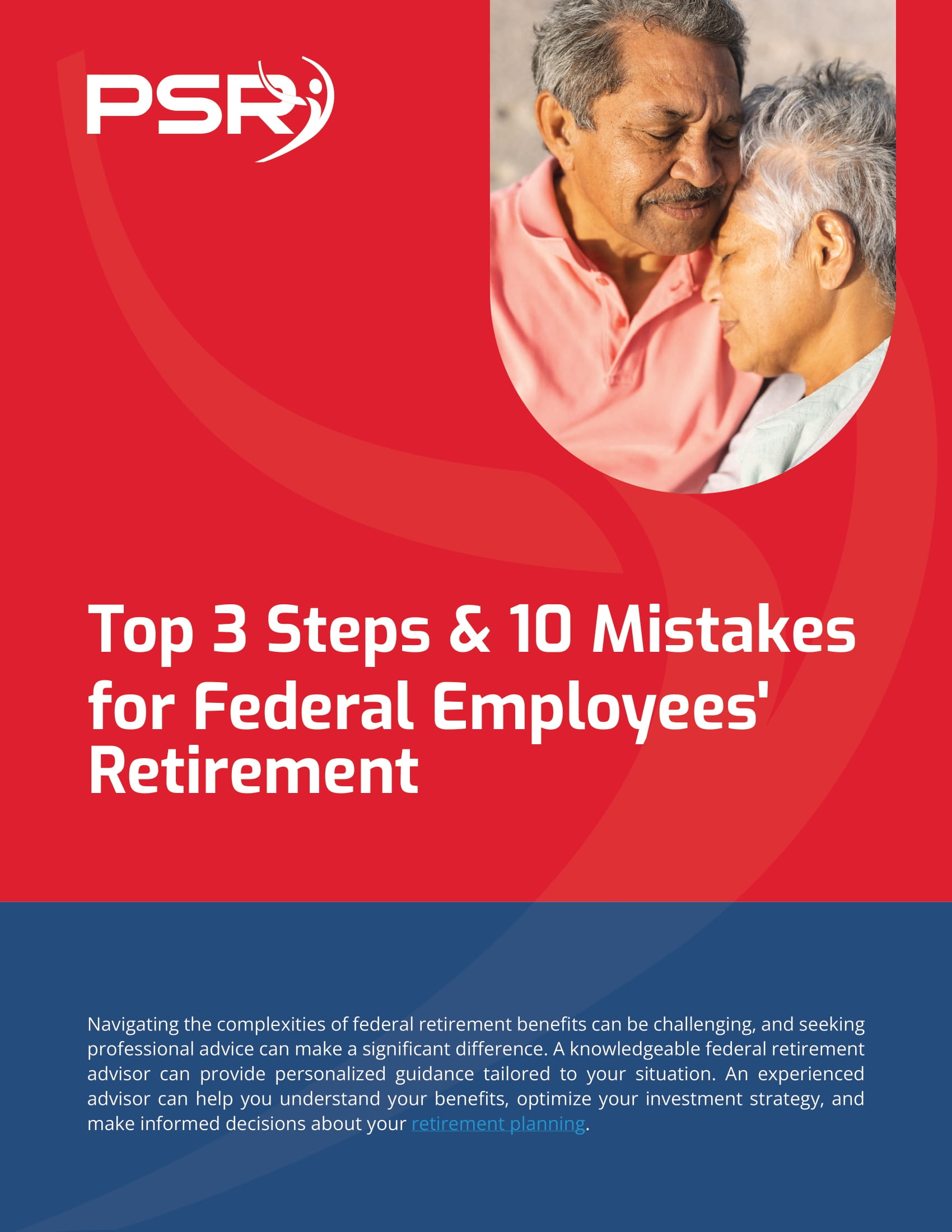Key Takeaways
- Successful federal retirement planning in 2024 requires attention to updated benefits and costs, from TSP withdrawals to healthcare coordination.
- Making informed decisions about pensions, Medicare, and life insurance will ensure a smooth transition into retirement.
Expert Tips for Federal Employees Looking to Retire Without a Hitch—Don’t Let These Details Slip By
- Also Read: FAA, Law Enforcement, and Special Federal Employee Categories—Here’s What Makes Their Retirement Unique
- Also Read: Blending Private and Public Sector Retirement Plans Is Complicated—Here’s Where Couples Get It Wrong
- Also Read: The Silent Shift in Postal Service Retirement Benefits That Could Change Everything by 2026
Maximize Your Pension—Double-Check Your Calculations
For federal employees, understanding how your FERS (Federal Employees Retirement System) or CSRS (Civil Service Retirement System) pension is calculated is crucial for planning your retirement income. Your high-3 salary (the average of your highest three consecutive years of earnings) plays a major role in determining the amount you’ll receive each month. The number of years of service and a percentage multiplier are also part of the formula.
For FERS employees, confirming that your years of service and salary records are accurate ensures you won’t face unexpected reductions in your annuity. CSRS employees, who generally receive larger annuities, should also review their service records carefully. Specific groups such as Law Enforcement Officers (LEOs) and Firefighters may qualify for enhanced retirement benefits, so verifying your eligibility for these provisions is essential.
Plan Your TSP Withdrawals—Stay Ahead of the Curve
The Thrift Savings Plan (TSP) is a critical element of your retirement strategy, and how you manage your withdrawals can significantly impact your long-term financial security. In 2024, you can contribute up to $23,000 to your TSP if you’re under 50, and up to $30,500 if you’re 50 or older. When you retire, you’ll need to decide how to withdraw your funds.
TSP offers a variety of withdrawal options, including monthly payments, lump sums, or purchasing an annuity. Each option has tax implications, as withdrawals are generally taxed as income. In 2024, Roth TSP balances offer even more flexibility because they are no longer subject to Required Minimum Distributions (RMDs). This means you can leave your Roth TSP funds untouched for as long as you wish, allowing for continued tax-free growth.
Planning your withdrawals carefully is key to balancing income stability with tax efficiency. Consider working with a financial advisor to create a withdrawal strategy that aligns with your retirement goals and reduces your overall tax burden.
Claiming Social Security—Timing Is Everything
As a federal employee under FERS, you’re entitled to Social Security benefits in addition to your pension and TSP. However, deciding when to claim Social Security can significantly impact your retirement income. You can start receiving benefits as early as age 62, but doing so will result in a permanent reduction of up to 30%. If you delay benefits until age 70, your payments increase by about 8% per year after reaching your full retirement age.
The right time to claim depends on several factors, including your health, financial needs, and other income sources. Balancing your Social Security benefits with TSP withdrawals and your pension can ensure you don’t outlive your savings. Take the time to assess your financial situation before making a decision to claim.
FEHB and Medicare—Getting the Best Healthcare Coverage
Healthcare costs are a top concern for retirees, and federal employees are in the unique position of being able to keep their FEHB coverage in retirement. However, at age 65, you also become eligible for Medicare. Many retirees enroll in both Medicare Part A and Medicare Part B to minimize out-of-pocket healthcare costs, but understanding how FEHB and Medicare work together is crucial.
In 2024, many FEHB plans offer incentives for retirees who enroll in Medicare Part B, such as reduced premiums and lower copays. By carefully reviewing your plan and understanding your healthcare needs, you can maximize your benefits. For some retirees, keeping FEHB alongside Medicare offers comprehensive coverage with fewer out-of-pocket expenses.
Survivor Benefits—Securing Your Family’s Future
When you retire, you’ll need to make important decisions about survivor benefits. Under both FERS and CSRS, you can elect to provide a portion of your pension to your spouse in the event of your death. For FERS employees, this typically means your spouse will receive 50% of your annuity, though this option reduces your monthly benefit. It’s crucial to carefully consider your family’s financial needs before making this decision, as it’s generally irreversible.
In addition to pension survivor benefits, you should review and update your beneficiary designations for life insurance, TSP, and other accounts. Keeping these designations current ensures that your assets are distributed according to your wishes and prevents legal complications for your loved ones.
Preparing for Higher Healthcare Costs
As healthcare costs continue to rise, it’s essential to plan for increased expenses in retirement. In 2024, premiums for FEHB are rising by 13.5% on average, which could significantly impact your budget. You’ll also need to consider other out-of-pocket costs like deductibles and copays. Evaluating your healthcare needs during Open Season and selecting a plan that fits your budget can help you manage these costs.
If you’re eligible for Medicare, coordinating your FEHB with Medicare can help lower overall healthcare expenses, but you’ll need to weigh the benefits of enrolling in Medicare Part B. Many retirees find that combining FEHB and Medicare provides the most comprehensive coverage, but you should assess your personal healthcare needs and financial situation before making a decision.
Reevaluate Your FEGLI Coverage
The Federal Employees’ Group Life Insurance (FEGLI) program provides valuable life insurance coverage during your career, but as you age, premiums—especially for Option B—can become prohibitively expensive. In 2024, FEGLI premiums continue to rise for older employees, making it essential to reevaluate your life insurance needs as you approach retirement.
Many retirees find that they no longer need the same level of coverage they had earlier in their careers, particularly if their financial obligations, like paying off a mortgage or funding a child’s education, have been reduced. If FEGLI premiums become too expensive, reducing coverage or transitioning to another type of life insurance may be more affordable. Reviewing your life insurance options now will help ensure that you’re not paying for coverage you no longer need.
Plan for Long-Term Care
One often-overlooked aspect of retirement planning is long-term care. As life expectancy increases, the likelihood of needing long-term care services also rises. The Federal Long-Term Care Insurance Program (FLTCIP) offers coverage for services such as nursing home care, in-home assistance, and assisted living. While long-term care insurance isn’t for everyone, it’s worth considering, especially if you have a family history of health conditions that might require extended care.
Planning for long-term care early can help protect your retirement savings and ensure that you have access to the care you need later in life. Without a plan in place, long-term care costs can quickly drain your savings, leaving you financially vulnerable.
Stay Organized and Informed for a Seamless Retirement
The path to a smooth federal retirement is paved with careful planning and regular reviews of your benefits. In 2024, rising healthcare costs, changes to TSP rules, and life insurance premium increases mean that federal employees need to stay informed and proactive. Keeping track of important deadlines, reviewing your benefits package annually, and adjusting your financial strategy as needed will help ensure that you can retire without a hitch.













